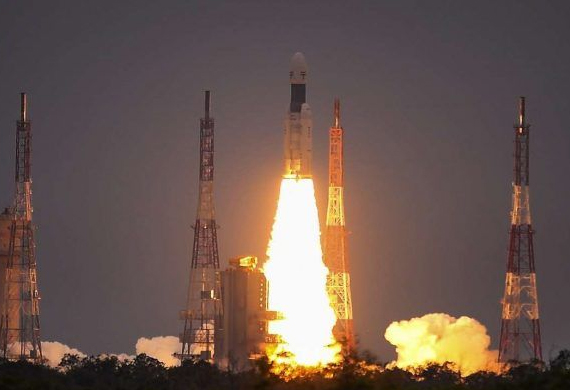
History Created: India Successfully Launches Chandrayaan-3 with Massive Contribution from Women Scientists
By: WE Staff | Friday, 14 July 2023
India's space agency, the Indian Space Research Organisation (ISRO), achieved a significant milestone as the Chandrayaan-3, the country's third moon mission, successfully launched on July 14. The Launch Vehicle Mark-3 (LVM-3) carrying the satellite lifted off at 2:35 p.m. from the Satish Dhawan Space Centre's second launch pad in Sriharikota. Ritu Karidhal, dubbed the "Rocket Woman of India," is in charge of Chandrayaan 3.
In Chandrayaan-3, a lot of women have contributed significantly to the endeavour. An unnamed senior ISRO official claims that almost 54 female engineers and scientists have personally contributed to the development of Chandrayaan-3. They work at several centres as project managers, associate project directors, and deputy project directors.
There are several bright women on the team, including P. Madhuri, a worker at the Sriharikota rocket port has seen commentating during rocket launch.
Following the unsuccessful soft landing of Chandrayaan-2 in 2019, this mission marks India's second attempt at achieving a successful lunar landing. The feat has only been accomplished by the United States, Russia, and China to date. Approximately 16.157 minutes after launch, the LVM-3 separated from the launch pad, placing the integrated module consisting of a propulsion module, lander module, and rover into an elliptical parking orbit (EPO) with dimensions of approximately 170 by 36,500 km.
Chandrayaan-3 is designed to explore and test new technologies required for interplanetary missions. The mission consists of a rover, a lander module, and an indigenous propulsion module. The lander and rover will be propelled from an injection orbit to a lunar orbit of 100 km using the propulsion module. The spacecraft also carries a payload named Spectro-polarimetry of Habitable Planetary Earth (SHAPE), which will enable the examination of spectral and polarimetric measurements of Earth from the lunar orbit.
ISRO has stated that the lander has the capability to make a gentle landing at a specific location on the moon. Once landed, the rover will conduct in-situ chemical analysis of the lunar surface while in motion. Both the lander and rover carry scientific payloads to perform tests and gather data on the lunar surface. After a series of maneuvers over the next month, including Earthbound maneuvers, lunar orbit insertion, moonbound maneuvers, and PM and Lunar Module separation, the lander is expected to make a gentle landing on the Moon on August 23 or 24.
The successful launch of Chandrayaan-3 represents a significant step forward for India's space exploration efforts. With this mission, India aims to advance its capabilities in lunar exploration, paving the way for future interplanetary endeavors and contributing to our understanding of the Moon's composition and potential resources.


.jpg)



